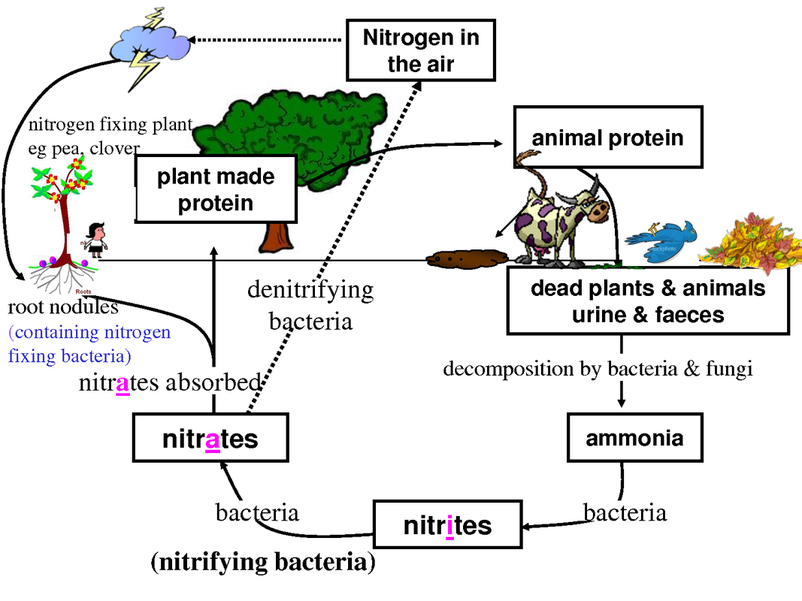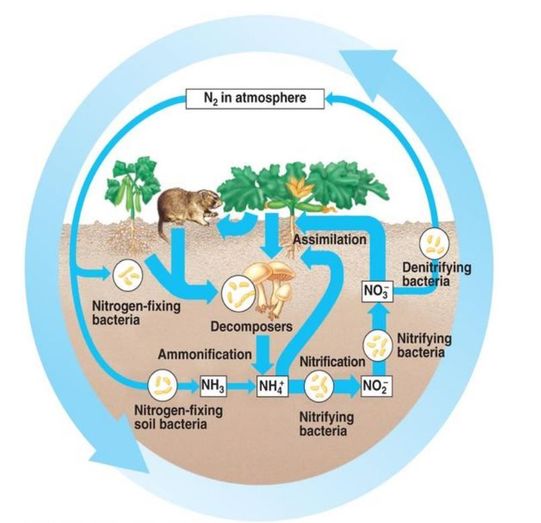Fruit Forest Gardens
We will be expanding the information here in the months and years ahead.
Happy edible gardening. Need help text us at 954-740-4070
Happy edible gardening. Need help text us at 954-740-4070
Agromisa is a non profit based in the Netherlands. They provide information on small scale sustainable farming. Below are some of their excellent publications. They made these available as free downloads on the web.
|
|
| ||||||||||||||||||
|
|
| ||||||||||||||||||
|
|
| ||||||||||||||||||
The Food Forest
Food forests or fruit forests are designed to grow food in harmony with nature. They require less maintenance if properly planned and created. They incorporate tropical and subtropical perennial food plants along with nitrogen fixing trees, shrubs etc. A food forest utilizes strategically placed plants in order to provide shade and support for other plants. Trees can be accompanied by passion fruit vines and even seminole pumpkins for example. Vines can grow on trees for support. Leaf liter provides nutrient recycling just as in nature. Over time your food forest provides shade so there is less weeding and less water usage. A food forest can save you money and you can create one practically anywhere you wish!
A food forest is about diversity that offers habitat for birds, insects and a healthy soil food web. Add it all together and it means less or no pesticide use. A healthier more nutritious and sustainable food supply is possible with you food forest.
Below is a list of plants and some information on the basics of food forest design and the importance of nitrogen fixing plants. Because sometimes you just want to go at it alone! Good luck and consider giving me a call will you! LOL.. Here to help!!
A food forest is about diversity that offers habitat for birds, insects and a healthy soil food web. Add it all together and it means less or no pesticide use. A healthier more nutritious and sustainable food supply is possible with you food forest.
Below is a list of plants and some information on the basics of food forest design and the importance of nitrogen fixing plants. Because sometimes you just want to go at it alone! Good luck and consider giving me a call will you! LOL.. Here to help!!
Fruit Trees
Banana:
Musa sp.
Dwarf nam wah
Burro
Puerto Rican Plantain
Citrus/Guava I bet your wondering why is citrus next to guava? :-)
Citrus
Key Lime
Meyers Lemon
Psidium guajava
Ruby Supreme
Pink Guava
Mango June- Aug
Mangifera indica
San Felipe (Cuban Mango)
Nam Doc Mai (Asian Semi Dwarf)
Glenn
Cogshall (Semi Dwarf)
Pickering (Semi Dwarf)
Lychee May - July
Litchi chinensis
Sweetheart
Ha kip
Brewster
Mauritius
Avocado
Persea americana
Avocado Type A
May – June Doni
June – August Simmonds
August – Sept Catalina, Russell
August – October Bernecker
October – Nov Haas
November – Jan Choquette
Avocado Type B
July – September Beta Commercial Type
August – September Miguel
September – Oct Bacon Like Haas
September – November Brogdon
November – Jan Monroe, Oro Negro, Catalina
More Fruit Trees
Papaya: Carica papaya - Red Lady, Solo, TR. Hovey
Loquat: Eriobotrya japonica- Yehuda, Gold Nugget, Christmas, Vista White, Big Jim
Carambola: Averrhoa carambola- Sri Kenbangan, Fwang Tung, Bell, Kary
Sapodilla: aka: nispero - Manilkara zapota - aka: nispero Alano, Molix, Morena, Tikal
Sugar Apple: aka Anon Annona squamosa - Kampong Mauve, Thai Lessard
Soursop aka: Guanabana - Annona muricata not cold hardy!
Miracle Fruit: Synsepalum dulcificum Sour-sweet fun plant to grow filtered light.
Fig Trees: Ficus carica - LSU Purple, Alma, Green Ischia (Better in pots if sandy soils)
Subtropical Peach
100 Chill Florida Grande, UF Sun, UF Best
150 Chill Florida Prince, Tropic Beauty
Red Mombin- aka Ciruela/Hog Plum Spondias purpurea– Not cold hardy!
Mulberry: Pakistani or Black Mulberry
Jabotica: Brazilian Grape Tree Red Jaboticaba
Nitrogen Fixers (Not edible)
Nitrogen fixers are plants that are able to take nitrogen out of the air via the roots and get them into the soil. Plants nearby can benefit from the nitrogen. The plants are also fast growers and are pruned often to maintain size. The leaves and branches are chopped and returned to the soil. They are spread out as mulch and assist in controlling weeds and maintaining moisture. This is also a great way to recycle nutrients back to the soil.
Nitrogen fixing trees add much more nitrogen to the soil than other nitrogen fixers. The action of chopping, stimulates the roots of the trees to drop the nitrogen nodes of the roots into the soil. Chop and drop is best performed during the rainy season. Trees will respond better and grow back quickly. Avoid using large quantity of branches. The wood contains carbon and too much carbon will leach nitrogen from the soil.
The one trees I mention below makes the most sense (in my opinion) for a Florida Food Forest. Others will be added as time passes and more experience is gained.
Important Note:
Nitrogen fixing plants are survivors and can become invasive. The most beneficial ones are listed here and do not seem to be invasive. Please check with your local agricultural extension agent to be sure. Plants are often invasive in one area and not another or they may have recently been restricted from planting. The one tree I mention below makes the most sense (in my opinion) for a Florida Food Forest. Others will be added as time passes and more experience is gained.
Important Chop and Drop Tip: Because many nitrogen fixing trees produce seed pods you should chop and drop them just as they flower. This avoids spreading them all over and becoming invasive.
Trees
A Nitrogen fixing tree for the Florida food forest
Lysiloma bahamensis:
Wild Tamarind or Cuban Tamarind is not the real Tamarind Tamarindus indica that produces edible sweet tart fruit. It is a Florida Native and a noninvasive nitrogen fixer. They are fast growers, providing temporary shade to younger fruit trees or crops below as needed. They can be cut down and they will not grow back from the roots.
Sesbania:
Gliricidia sepium: aka: Nicaraguan cocoa shade, quick-stick, cacahuananche, madre de cacao.
Medium sized tree. Need to research further to make sure it is not a prohibited species for planting in South, Florida.
Other nitrogen fixing plants
Some of the ones listed below are planted generally for just a few months. Typically they are uprooted and turned back into the soil to enrich it and prepare it for the next crop or to break down and feed the soil.
Pigeon peas - gandules
Comfrey - Bocking 14 variety is better for South Florida
Cowpeas
Peanuts- Arachis hypogaea Nitrogen fixers
Bolivian Sunflower: Tithonia diversifolia fast grower 15 feet – 30 feet chop and drop. Equal pound per pound to chicken manure.
Fakahatchee Grass: Tripsacum dactyloides also dwarf variety Tripsacum floridanum
Wet well drained areas full sun part shade.
Sensitive plant: Mimosa pudica - groundcover
Mimosa strigillosa is called powderpuff mimosa and sunshine mimosa. A Florida native.
Grasses
Lemon Grass: Cymbopogon
Bushes
Basil: African Blue - Ocimum kilimandscharicum × basilicum
Excellent perennial for South Florida climate. Great for Bees!
Does not produce seeds must be cloned!!
Katuk: aka sweet leaf - Sauropus androgynus
Cassava aka Yuca: Manihot esculenta
Hibiscus: Cranberry Hibiscus aka - Roselle Hibiscus sabdariffa
Excellent perennial for South Florida climate. Great for Bees!
Does not produce seeds must be cloned!!
Katuk: aka sweet leaf - Sauropus androgynus
Cassava aka Yuca: Manihot esculenta
Hibiscus: Cranberry Hibiscus aka - Roselle Hibiscus sabdariffa
Vines
Passion fruit- Passiflora edulis (purple) and Passiflora edulis flavicarpa (yellow) flavicarpa needs to cross pollinate.
Blackberry: Rubus many varieties available- Thornless types: Apache, Arapaho, Natchez, Navaho
Thorny types: Brazos, Choctaw, Chickasaw
Muscadine grape: Vitis rotundifolia Carlos, Triumph, Fry, Summitt, Southern Home, Tara, Noble Muscadines are Florida natives.
Ivy gourd: Coccinia grandis Common names- Scarlet gourd, Tindora, Thai spinach, Kovai.
Blackberry: Rubus many varieties available- Thornless types: Apache, Arapaho, Natchez, Navaho
Thorny types: Brazos, Choctaw, Chickasaw
Muscadine grape: Vitis rotundifolia Carlos, Triumph, Fry, Summitt, Southern Home, Tara, Noble Muscadines are Florida natives.
Ivy gourd: Coccinia grandis Common names- Scarlet gourd, Tindora, Thai spinach, Kovai.
Groundcovers
Boniato: Ipomoea batatas (tropical sweet potatoes)
Note: 'Picadia', is grown in the fall and winter and 'Campeon', is grown in the summer and fall.
Callaloo: Amaranthus viridis leafy green popular in Jamaica and the caribbean.
Malabar Spinach: Basella alba. Ground cover or vine with support
Mint: Mentha
Okinawa Spinach- Gynura bicolor
Oregano-Cuban Plectranthus amboinicus
Peanut: Arachis hypogaea Nitrogen fixers
Perennial peanut: Arachis glabrata Arachis hypogaea Nitrogen fixers
Portulaca: Portulaca oleracea aka-Purslane This is an excellent companion plant that actually improves soil via its tap root. Provides a pathway and offers nutrients for other nearby plants. Assists other plants to grow roots deeper into the soil.
Sambar Spinach: Talinum fruticosum aka- Ceylon Spinach
Caution: Contains large quantities of oxalic acid. Persons suffering from kidney problems and other medical conditions should seek advice from a medical professional for advice.
Sensitive plant: Mimosa pudica and Mimosa strigillosa Both are nitrogen fixers and strigillosa is a Florida native that attracts little yellow sulfur butterflies.
Tilo: Justica pectoralis- Excellent spreading groundcover for shady areas. Adds color and is also used as a medicinal plant.
Additional valuable links:
http://www.fao.org/docrep/006/AD228E/AD228E00.htm#TOC
|
|
* FDA Disclaimer
The products and statements made about specific plants or products on this web site have not been evaluated by the United States Food and Drug Administration (FDA) and are not intended to diagnose, treat, cure or prevent disease. All information provided on this web site or any information contained on or in any product label or packaging is for informational purposes only and is not intended as a substitute for advice from your physician or other health care professional. You should not use the information on this web site for diagnosis or treatment of any health problem. Always consult with a healthcare professional before starting any new vitamins, supplements, diet, or exercise program, before taking any medication, or if you have or suspect you might have a health problem.
Advertising Disclosure:
Pepesplants.com is a participant in the Amazon Services LLC Associates Program and also Googles affiliate advertising program. The programs provide a means for web sites to earn revenues from advertising and or sales.
Content Disclosure
Use all information on this site at your own risk.
The content here is based on the publishers personal experience in the green industries.
Although every reasonable effort has been made to ensure the accuracy of the information contained on this site, absolute accuracy cannot be guaranteed. This site, and all information and materials appearing on it, are presented to the user "as is" without warranty of any kind, either express or implied
The products and statements made about specific plants or products on this web site have not been evaluated by the United States Food and Drug Administration (FDA) and are not intended to diagnose, treat, cure or prevent disease. All information provided on this web site or any information contained on or in any product label or packaging is for informational purposes only and is not intended as a substitute for advice from your physician or other health care professional. You should not use the information on this web site for diagnosis or treatment of any health problem. Always consult with a healthcare professional before starting any new vitamins, supplements, diet, or exercise program, before taking any medication, or if you have or suspect you might have a health problem.
Advertising Disclosure:
Pepesplants.com is a participant in the Amazon Services LLC Associates Program and also Googles affiliate advertising program. The programs provide a means for web sites to earn revenues from advertising and or sales.
Content Disclosure
Use all information on this site at your own risk.
The content here is based on the publishers personal experience in the green industries.
Although every reasonable effort has been made to ensure the accuracy of the information contained on this site, absolute accuracy cannot be guaranteed. This site, and all information and materials appearing on it, are presented to the user "as is" without warranty of any kind, either express or implied
Site created and managed by Pepe's Fruit Trees. Copyright 2024 - All Right Reserved
Site created and managed by Pepe's Fruit Trees. Copyright 2024 - All Right Reserved







